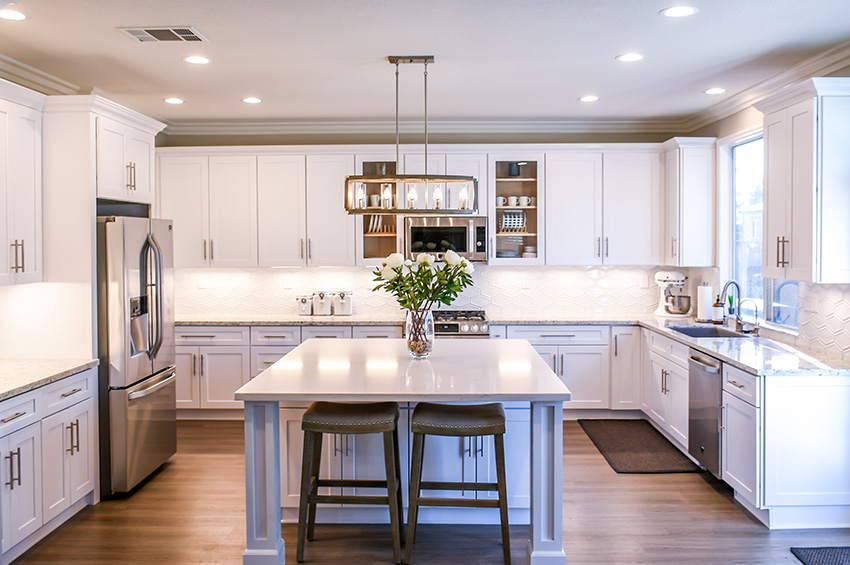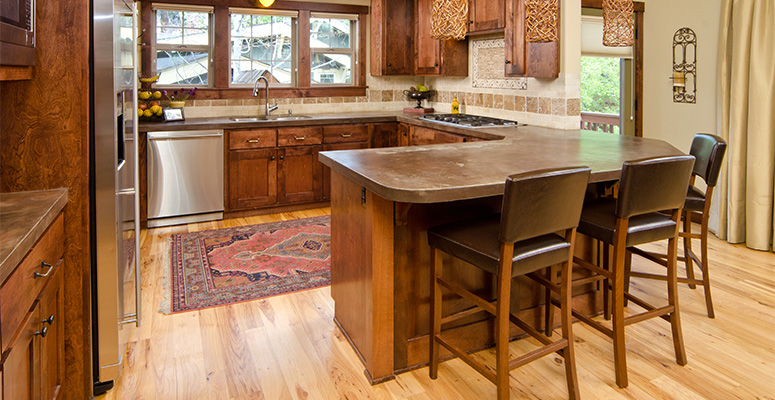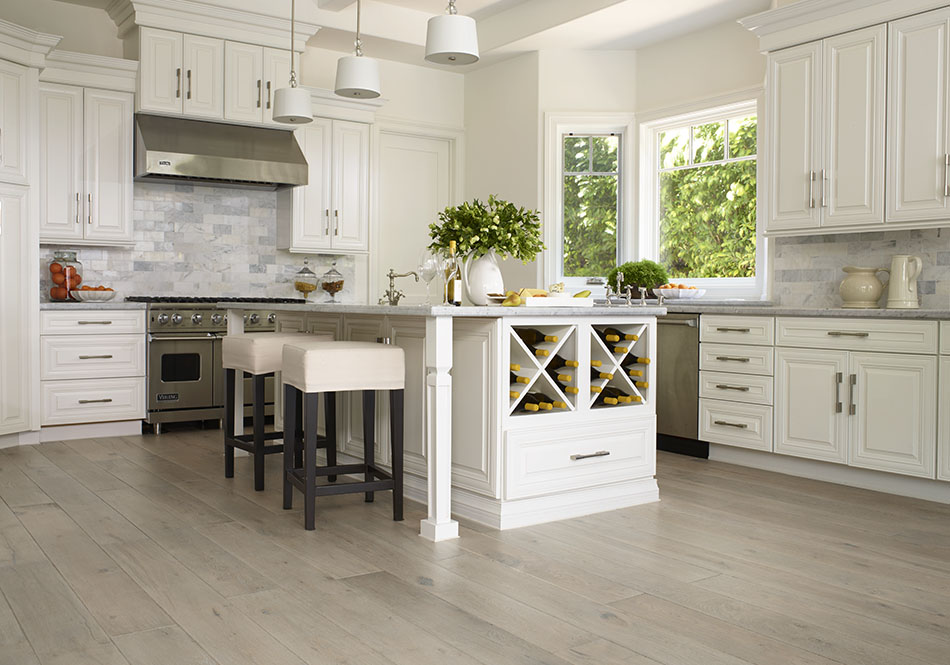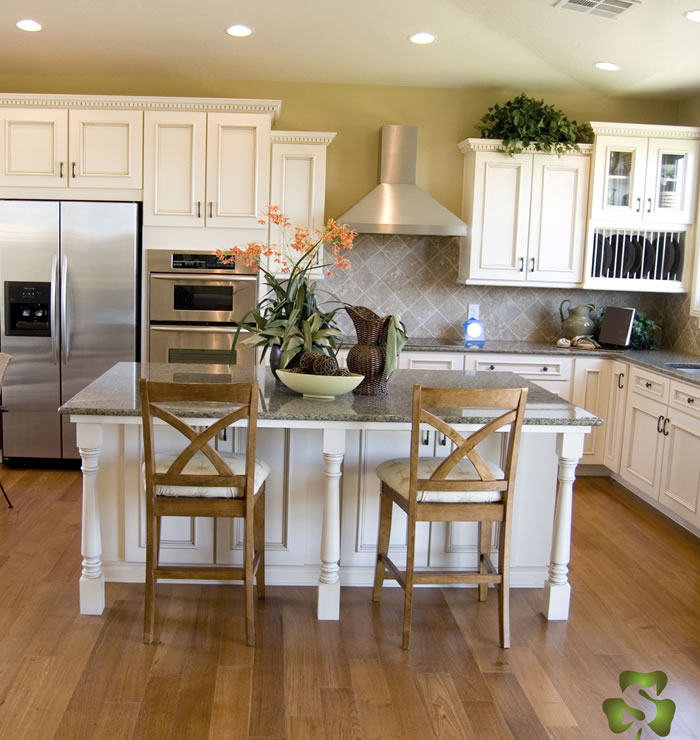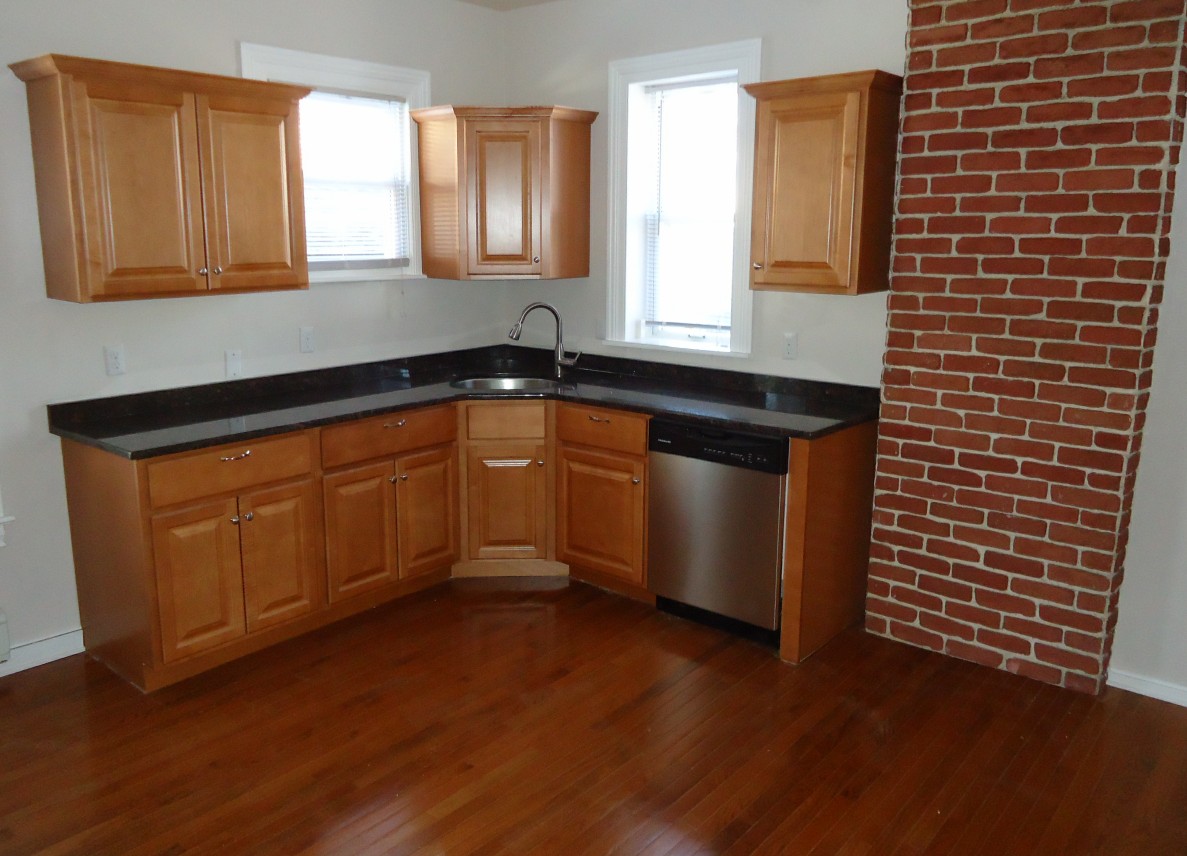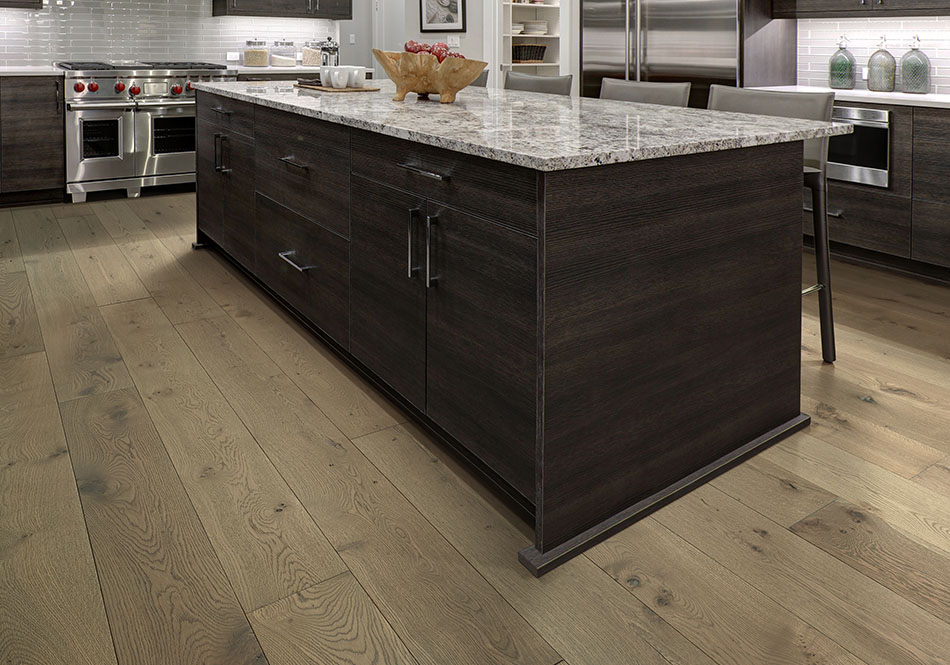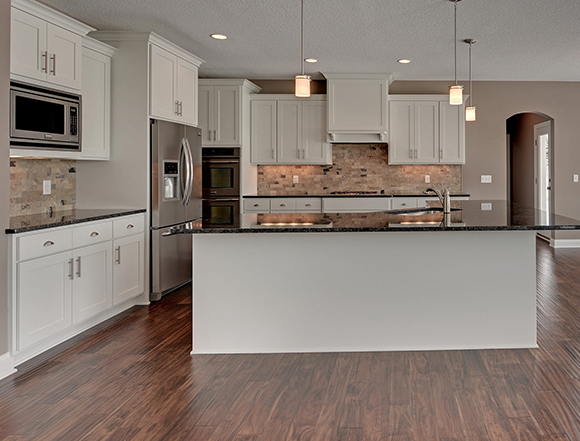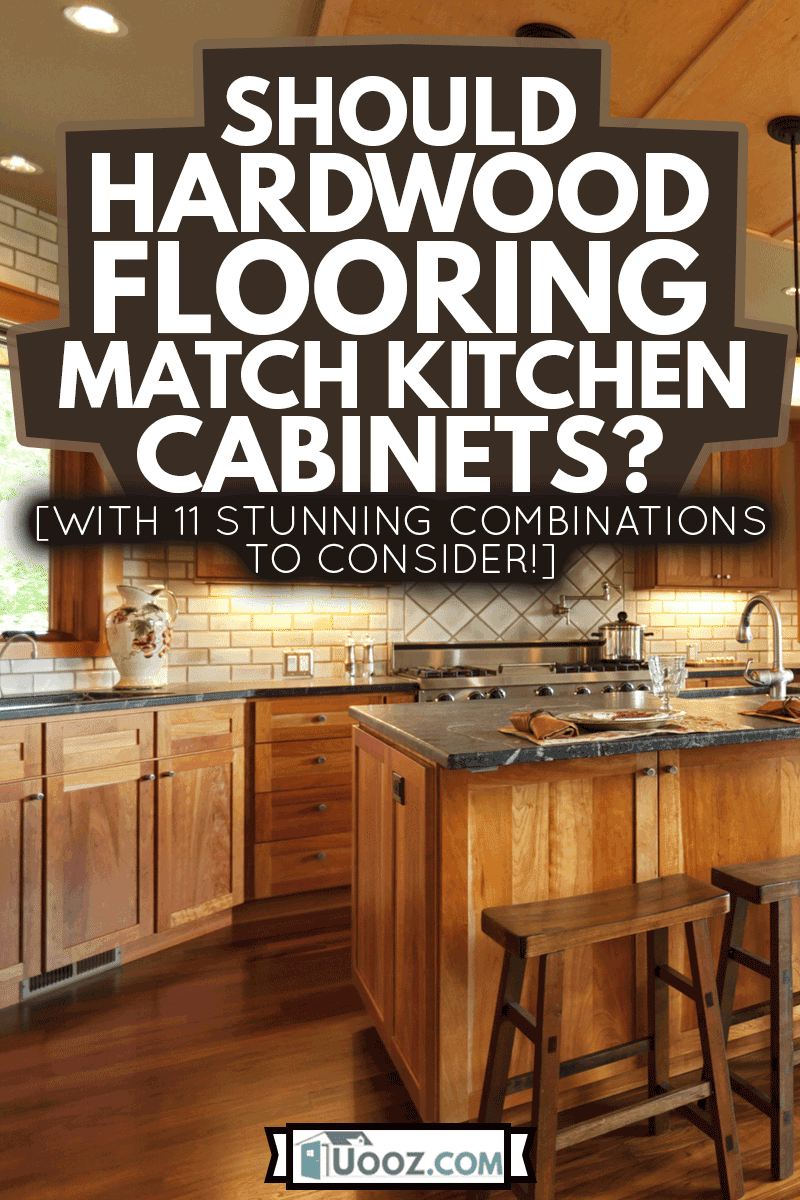Finding the perfect balance between wood floors and cabinets is a true art when designing a kitchen. As someone passionate about interior aesthetics and understanding the nuances of wood tones, I’m excited to guide you through achieving a harmonious and visually appealing kitchen. Let’s delve into the world of matching wood floors to kitchen cabinets!
Understanding Wood Tones and Color Matching
In the realm of interior design, the subtleties of wood tones can make or break the overall aesthetic of your kitchen. Let’s lay the groundwork for a successful match:
The Importance of Coordinated Wood Tones
Matching wood tones isn’t just about creating a visually pleasing space; it’s about enhancing the warmth and character of your kitchen. Coordinated wood tones can create a seamless flow that ties together different elements.
How Wood Colors Impact Kitchen Aesthetics
Wood colors set the mood for your kitchen. Lighter tones can create an open and airy feel, while darker tones create a sense of coziness and elegance. Understanding this impact helps you make informed decisions.
Assessing Cabinet and Floor Colors
Before diving into matching, it’s crucial to assess the existing colors of your cabinets and floors. Here’s where to start:
Evaluating Cabinet Wood Finishes
Examine the finish and undertones of your kitchen cabinets. Are they natural wood, stained, or painted? This assessment forms the foundation for coordinating with your flooring.
Identifying Undertones in Wood Floors
Just like paint colors, wood has undertones too. Look closely at your wood floors to determine if they have warm, cool, or neutral undertones. This understanding guides your color-matching efforts.

Complementary Color Schemes
Complementary color schemes involve using colors opposite each other on the color wheel. Let’s explore how this concept applies to wood floors and cabinets:
Exploring Complementary Color Relationships
Pairing warm-toned cabinets with cool-toned floors (and vice versa) can create a visually striking contrast that adds depth and intrigue to your kitchen.
Harmonizing Warm and Cool Wood Tones
Consider using warm wood tones that share similar undertones for a balanced look. This approach maintains a sense of cohesion while allowing individual elements to shine.
Contrasting Color Strategies
Contrasting color strategies involve using colors that are significantly different from each other. This approach can lead to captivating visual effects:
Creating Striking Contrasts for Visual Interest
Dark cabinets against light wood floors or vice versa can create a captivating focal point in your kitchen. The contrast draws attention and makes each element stand out.
Balancing Bold Wood Cabinet Choices with Flooring
When working with bold cabinet colors, opt for more neutral or subdued flooring to avoid overwhelming the space. Conversely, muted cabinets can be paired with more intricate or visually captivating floors.
Natural vs. Stained Wood
Choosing natural and stained wood introduces another layer of complexity to your decision-making process. Let’s explore these options:
The Beauty of Natural Wood’s Variations
Natural wood features unique grains and tones that add character to your kitchen. Matching cabinets and floors with natural finishes can create a textured and organic aesthetic.
Achieving Consistency with Stained Wood
Stained wood offers the advantage of consistency. If you want a more uniform appearance, opting for stained wood for both cabinets and floors can create a polished look.
The Role of Lighting
Lighting plays a significant role in how wood tones appear in your kitchen. Consider these lighting-related factors:
Impact of Natural and Artificial Lighting on Wood Appearance
Natural sunlight and artificial lighting can significantly alter the perceived color of the wood. Test how different lighting conditions affect your chosen wood tones to ensure consistency.
Adjusting Color Perception with Different Lighting
If your kitchen receives varying degrees of natural light throughout the day, be prepared for the wood tones to shift. Choose colors that still look pleasing under different lighting conditions.
Coordinating with Kitchen Style
Your kitchen’s overall style can guide your wood-matching choices. Let’s explore how to harmonize wood tones with different kitchen designs:
Matching Wood Tones to Modern Kitchen Designs
Modern kitchens often favor sleek and minimalist designs. Opt for cabinets and floors with clean lines and similar tones to create a cohesive, streamlined look.
Harmonizing Wood Elements in Traditional Kitchens
Traditional kitchens embrace intricate details and ornate designs. Consider pairing cabinets and floors with rich, warm wood tones to evoke a classic and inviting atmosphere.
Samples and Visual Mock-Ups
Don’t leave your wood matching to chance. Use samples and visual tools to make informed decisions:
Using Wood Samples to Aid Decision Making
Request cabinet and flooring materials samples to see how they look in your kitchen’s lighting. Compare these samples to your existing elements for a realistic preview.
Virtual Tools for Visualizing Wood Combinations
Virtual design tools allow you to visualize different wood combinations before committing. These tools can help you avoid potential mismatching regrets.
Popular Wood And Cabinet Pairings
Let’s dive into some tried-and-true wood combinations that have stood the test of time:
Classic Pairings: Oak Cabinets with Maple Floors
The warm tones of oak cabinets complement the maple floors’ light and subtle appearance. This combination brings a timeless charm to your kitchen.
Contemporary Choices: Dark Wood Cabinets with Light Oak Floors
Pairing dark cabinets with light oak floors creates a contemporary contrast that’s visually impactful. This combination adds depth and modern flair to your kitchen.
Practical Considerations
While aesthetics are essential, don’t forget about practicality when matching wood tones:
Maintenance and Cleaning of Different Wood Types
Consider the maintenance needs of different wood types. Some woods require frequent cleaning and upkeep, while others are more forgiving.
The durability of Wood Floors in High-Traffic Kitchen Areas
Kitchen floors endure heavy foot traffic. Choose durable wood materials that can withstand the demands of daily use without losing their appeal.
How to Match Kitchen Floors and Cabinets Twenty u0026 Oak – Twenty u0026 Oak
43 u201cNew and Spaciousu201d Light Wood Custom Kitchen Designs – Home
Mix – Donu0027t Match – Wood Textures and Colors; Experts Across the
Interior Design Qu0026A: Matching Hardwood Floors with Wood Cabinets
How to Match Kitchen Floors and Cabinets Twenty u0026 Oak – Twenty u0026 Oak
Cabinet Color Matching with Hardwood Flooring the Easy Way – The
Correctly Coordinating Cabinetry with Your Hardwood Floors Urban
Should Wood Floors Match Kitchen Cabinets? u2013 Best Home Fixer
Matching Cabinetry and Wood Floor Color Baer Home Design
Should Hardwood Flooring Match Kitchen Cabinets? [With 11 Stunning
Related Posts:
- Real Wood Flooring In Kitchen
- Wood Floor Kitchen Cabinet Combination Designs
- Solid Wood Floor Repair Kit
- Dark Wood Floor Finishes
- Light Oak Solid Wood Flooring
- Grey Wood Floor In Bathroom
- Pledge Wood Floor Cleaner Spray
- Wide Plank Wood Flooring Cost
- Light Wood Flooring Ideas
- Click Lock Wood Flooring Pros And Cons
